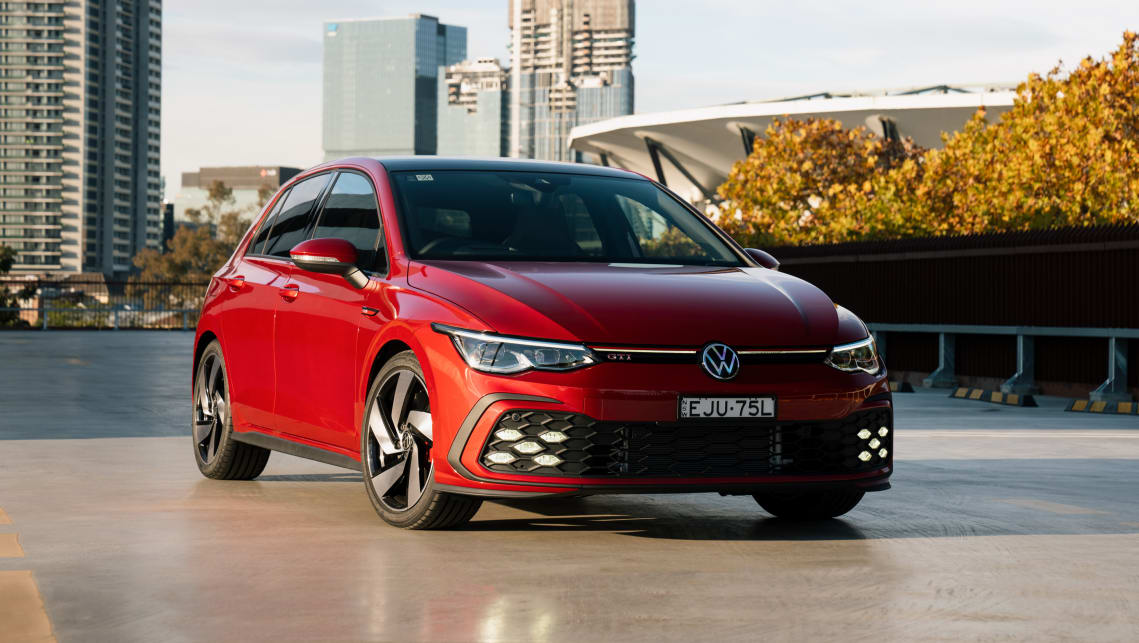
European electric car slashed nearly $20,000: Cupra Born in run-out with huge offers for MG4 hatch, Tesla Model 3 and Polestar 2 alternative
The Volkswagen Group’s first electric car to arrive in Australia is now being...
Browse over 9,000 car reviews

Australia’s favourite hot hatches have sky-rocketed in price in the past five years, with some models now costing more than 25 per cent more than they previously did.
The cost of the likes of the Volkswagen Golf GTI, Ford Focus ST and even the relatively new Hyundai i30 N have all jumped up in the past few years, making these so-called ‘affordable performance’ cars more expensive and out-of-reach for some buyers. And it’s not just the popular small-car-based options, the same is true of the compact Volkswagen Polo GTI and Ford Fiesta ST.
CarsGuide has compared prices from 2015 to 2021 and found that both the Golf GTI and Fiesta ST are now 26 per cent more expensive, the Polo GTI is 19 per cent up and the Focus ST is 15 per cent costlier. The i30 N has also jumped up significantly since its launch in 2018, rising from $39,990 to $44,500 (plus on-road costs), which is an 11 per cent increase in just three years.
To highlight the changes, let’s look at some of the key models. For example, the entry price for a hot hatch back in 2015 was just $25,990 for a Fiesta ST, while a Golf GTI started at $41,990. In 2021, the former costs more than $32,000 and the latter starts above $50,000. In fact, the Golf GTI is now priced from $53,100, which is less than $4000 difference from the more premium previous-generation Golf R.
While inflation and currency fluctuations typically lead to steady price increases over time, the huge leaps seen in the hot hatch market is down to other factors. According to the respective brands, there are a number of reasons for the rising prices.
Both Volkswagen and Hyundai spokespeople point to the increased level of standard equipment as a major factor, specifically the increased level of safety and multimedia in the latest Golf and the introduction of lightweight forged alloy wheels in the facelifted i30 hot hatch.

Volkswagen Group is in a unique position of offering multiple hot hatches across its Australian brands: Volkswagen, Skoda and the upcoming Cupra. The VW Golf GTI, Skoda Octavia RS and Cupra Leon are all based on the same ‘MQB’ underpinnings, use the same engine and all are positioned in a similar way, with premium equipment and pricing to match.
However, the brand says the reason for this, and specifically the Golf GTI’s jump in price over the past five years, is customer demand. The company’s spokesman explained the majority of Golf GTI buyers in recent years have preferred what was previously optional or unavailable equipment, such as its dual-clutch transmission, digital dashboard and electronic locking differential. That has led VW Australia to increase the level of equipment and the price has followed.

Another major influence is the majority of hot hatches are sourced from Europe, which means higher exchange rates compared to Asian-built models, as well as limitation on what’s available to a relatively small, right-hand-drive market.
The introduction of ‘WLTP’ fuel consumption testing has also played a part. With each model variant needing to be tested under WLTP regulations, carmakers have simplified options to have less model complexity, which has seen the end of the likes of the three-door Golf GTI that was priced under $40,000.
This trend is likely to continue with the upcoming facelifted VW Polo GTI and new-generation Golf R likely to see price increases (although the company hasn’t confirmed pricing yet), and the new Hyundai i20 N is likely to be position in the same low-$30k range as its direct rivals, the Polo GTI (from $32,890 currently) and Fiesta ST (from $32,290).
Comments